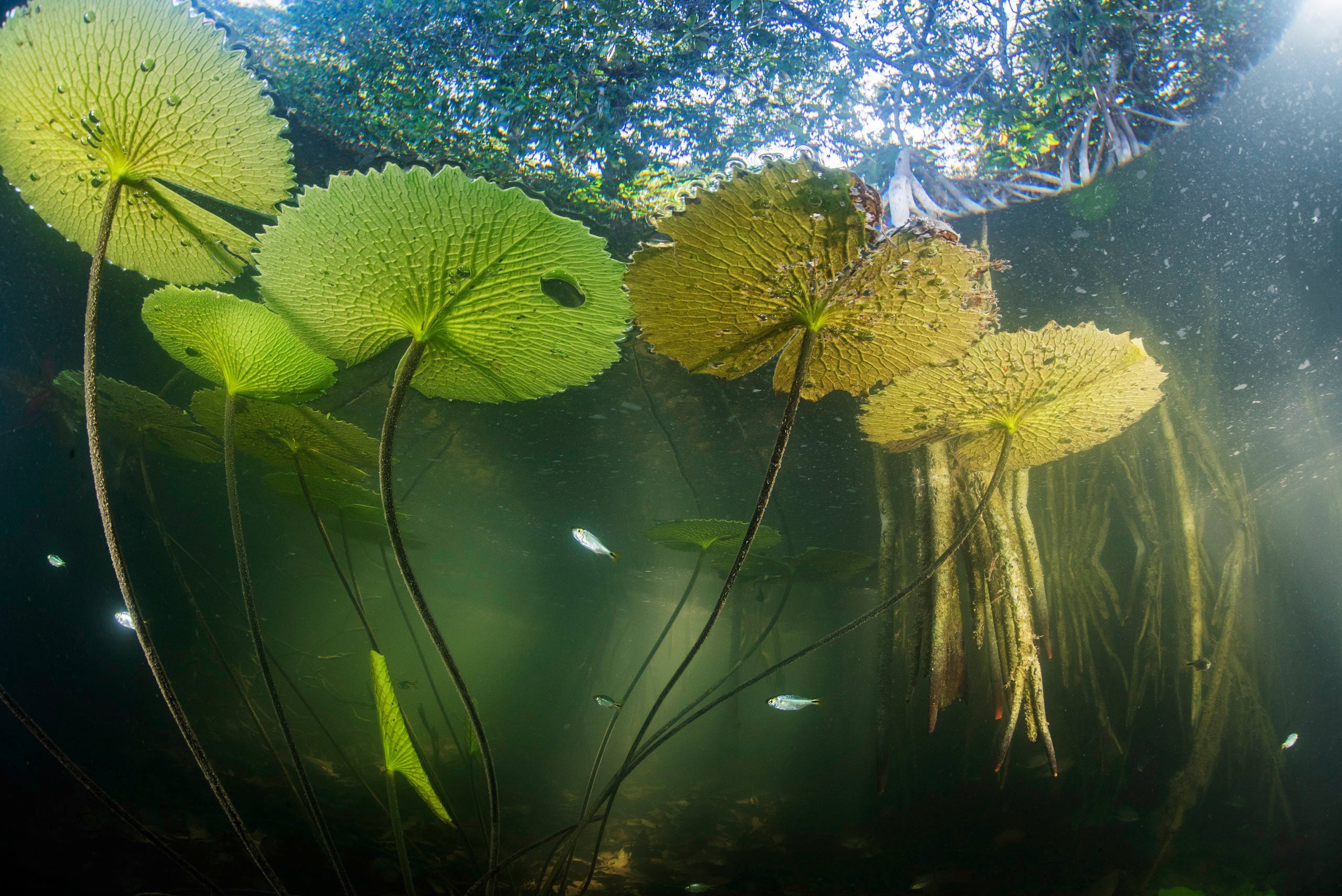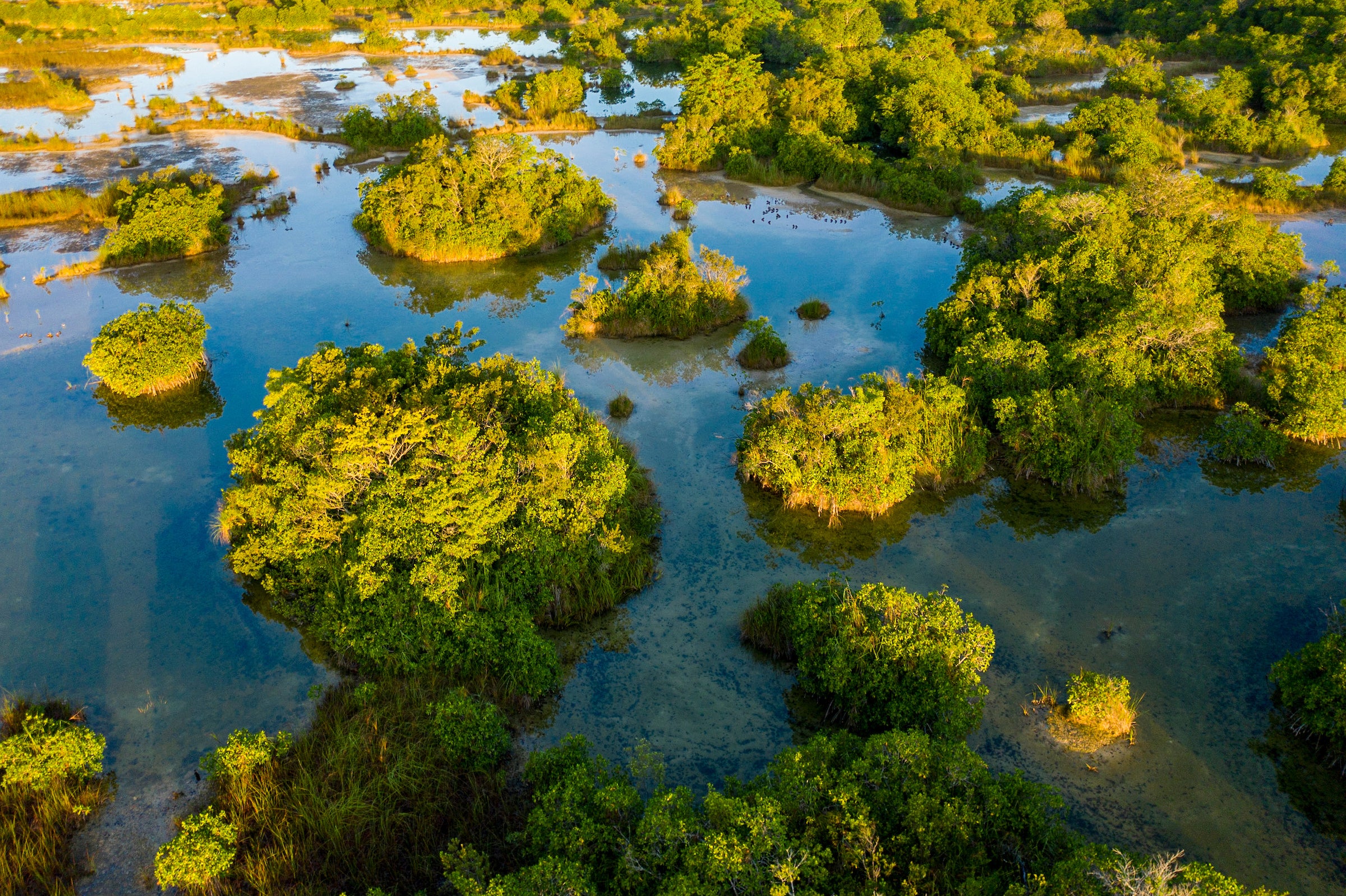Over 160 km from the Gulf of Mexico, an ecosystem of salt-tolerant trees is flourishing along a freshwater river. A team of researchers recently investigated how this verdant oasis got so side-tracked from its typical habitat, and they found that the forest was stranded inland during the last interglacial period more than 100,000 years ago.
“We found these beautiful lagoons, a beautiful forest of red mangroves,” said marine ecologist Octavio Aburto in a phone call. “It’s like a lost world.”
Aburto, of the Scripps Institution of Oceanography at UC San Diego, is part of a team that recently conducted a genetic analysis of the forest alongside a geological analysis to determine its age. They also surveyed the flora in the area (besides the red mangroves) and performed sea level modelling to determine where the ocean was during the Pleistocene epoch, which ended nearly 12,000 years ago. All that research on the seemingly out-of-place ecosystem was published today in the Proceedings of the National Academy of Sciences.

The forest sits on the banks of the San Pedro Mártir River and was discovered by Carlos Burelo, a botanist at the Universidad Juárez Autónoma de Tabasco who co-authored the recent paper. “I used to fish here and play on these mangroves as a kid, but we never knew precisely how they got there,” Burelo said in a UC San Diego press release. “That was the driving question that brought the team together.”
The geologic analysis by the team turned up marine gastropod fossils, indicating that the area wasn’t always a freshwater environment, an idea corroborated by the sea level modelling. During the last interglacial period, Earth was warm enough that the ice caps were fully melted. Sea levels were between 20 and 9.14 m higher than today, and water now relegated to the Gulf of Mexico was much farther inland. The mangroves grew where the ocean’s edge once was, but when the seawater receded, the forest remained. The ecosystem is what’s called a relict: a vestige of the ancient past that managed to persist.
The team thinks the mangrove population survived in the area thanks to the type of freshwater that replaced the sea. The water is rich in calcium carbonate, thanks to the limestone rock in the Tabasco region. Red mangroves can set up shop in calcic waters — without any seawater needed — though the situation is “very rare,” according to Aburto, who led the recent paper.
This mangrove forest hosts other organisms that typically live in saltwater ecosystems; the team recognised nearly 100 species that usually live near oceans, including some cacti and orchids, and yet were found many miles from any coast.

Unfortunately, the ancient forest is under threat. Farming and hunting in the area have seen the mangroves cut down and burned. Until the 1970s, the mangroves covered a wider swath of the Tabasco region, but efforts to establish cattle ranges near the river have relegated the last bits of the forests to the riverbanks.
“We hope this research creates support for more protection of this reservoir of biodiversity,” Aburto said. “It can help us to not only understand the past conditions of this planet, but also to help understand how we can adapt better to future changes.”
Though saltwater is what allowed the mangroves to set up shop in the first place, too much of a good thing can be trouble. While these mangroves are far inland today, other mangrove forests are at imminent risk of drowning — being inundated by the very waters they call home.
